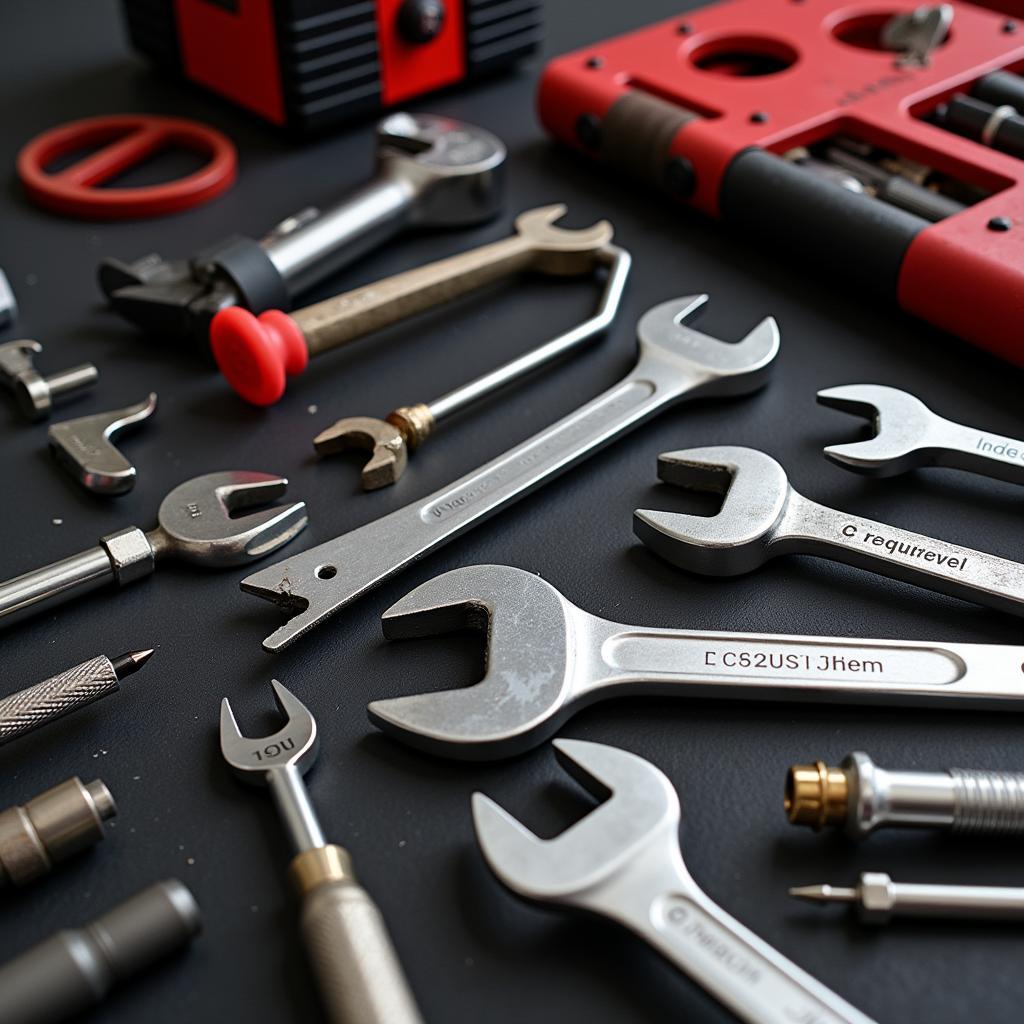Car power mirrors are a convenient feature, but they can sometimes malfunction, leading to a “glazed over” appearance that obscures your view. This issue, often caused by moisture accumulation or electrical problems, can be frustrating for any car owner. In this guide, we’ll dive into the common causes of glazed over power mirrors and provide practical solutions to help you regain clear visibility.
Common Causes of Glazed Over Power Mirrors
Here’s a breakdown of the most frequent culprits behind a power mirror’s cloudy appearance:
1. Moisture Condensation
The most common culprit is moisture trapped within the mirror housing. This usually happens during temperature changes, particularly after rain or heavy humidity.
Explanation: As the exterior temperature drops, the warm air inside the mirror housing cools down, leading to condensation. This moisture settles on the internal surface of the mirror, causing the “glazed over” effect.
2. Electrical Malfunction
Sometimes, the problem originates from the mirror’s electrical components.
Explanation: A short circuit or faulty wiring can disrupt the proper operation of the mirror’s heating element, which is designed to prevent condensation. Without adequate heat, moisture can accumulate and fog the mirror.
3. Damaged Seal
A damaged or cracked seal around the mirror housing allows moisture to seep in.
Explanation: If the seal is compromised, it becomes an entry point for rain, humidity, and other external elements. Over time, moisture can build up inside the mirror, obstructing your view.
How to Troubleshoot and Fix Glazed Over Power Mirrors
Now that you’ve identified the potential causes, let’s explore the steps to diagnose and resolve the problem:
1. Check for Moisture and Condensation
The first step is to visually inspect the mirror for any signs of moisture.
Instructions:
- Turn on the mirror heater: Most vehicles have a dedicated button or setting to activate the mirror heater. If your car has this feature, turn it on and observe whether the mirror defogs.
- Open the mirror housing (if possible): Some mirrors can be opened or disassembled to access the internal components. If you feel comfortable doing so, open the housing and check for any visible moisture or condensation.
Expert Tip: “If you see condensation inside the mirror housing, it’s likely a sign of a moisture intrusion issue. Look for any cracks or gaps in the seal around the mirror to pinpoint the source.” – John Smith, Automotive Technician
2. Inspect the Mirror’s Electrical Components
Once you’ve ruled out moisture, it’s time to investigate the electrical system.
Instructions:
- Check the wiring harness: Examine the wiring leading to the mirror for any damage, fraying, or loose connections.
- Test the mirror heater: Use a multimeter to test the resistance of the mirror heater element. If the heater is not working, you’ll need to replace it.
Expert Tip: “A damaged or loose wiring harness can cause a short circuit, preventing the mirror heater from functioning properly. Always ensure the wiring is in good condition.” – Maria Jones, Electrical Engineer
3. Check for Damaged Seals
If the problem persists, investigate the seal surrounding the mirror housing.
Instructions:
- Inspect the seal for any damage or cracks: Run your fingers along the seal to check for any tears, punctures, or signs of wear.
- Replace the seal (if necessary): If you find damage, replace the seal with a new one. This is often the most effective solution for preventing further moisture intrusion.
Expert Tip: “A damaged seal can be a gateway for moisture and other elements to enter the mirror housing. Replacing the seal can significantly improve the mirror’s longevity and prevent future issues.” – David Lee, Automotive Mechanic
Prevention Tips for Glazed Over Power Mirrors
Here are some proactive steps to minimize the risk of glazed over mirrors in the future:
- Use the mirror heater regularly: Even on mild days, using the mirror heater occasionally can help prevent condensation buildup.
- Park your car in sheltered locations: Whenever possible, park your car in a garage or under cover to minimize exposure to rain and humidity.
- Clean the mirrors regularly: Dust and debris can accumulate on the mirror surface, trapping moisture and contributing to fogging. Regularly cleaning the mirrors can help maintain clear visibility.
- Apply a sealant: Applying a water-repellent sealant to the exterior surface of the mirror can help prevent moisture from adhering to the glass.
Frequently Asked Questions
Q: How often should I use the mirror heater?
A: It’s a good idea to use the mirror heater every time you encounter rain or heavy humidity. Even on mild days, a quick activation can help prevent condensation.
Q: Can I use a hairdryer to dry the mirror?
A: It’s best to avoid using a hairdryer on your power mirrors. The heat from the hairdryer can potentially damage the mirror’s electrical components or the housing.
Q: How much does it cost to repair a glazed over power mirror?
A: Repair costs can vary depending on the cause of the problem. Minor repairs like replacing a seal might cost around $50, while a more significant repair involving electrical components could be upwards of $200.
Q: Should I take my car to a professional mechanic?
A: If you are uncomfortable performing the troubleshooting steps or repairs yourself, it’s always recommended to consult a professional automotive mechanic. They can diagnose and resolve the issue efficiently, ensuring a safe and lasting solution.
For professional assistance with any car issues, contact Autotippro today.
AutoTipPro:
Phone: +1 (641) 206-8880
Address: 500 N St Mary’s St, San Antonio, TX 78205, United States
We hope this guide has shed light on the reasons behind glazed over power mirrors and empowered you with the necessary knowledge to address the problem. Remember, clear visibility is crucial for safe driving, so don’t hesitate to seek professional help if you encounter any persistent issues.






Leave a Reply